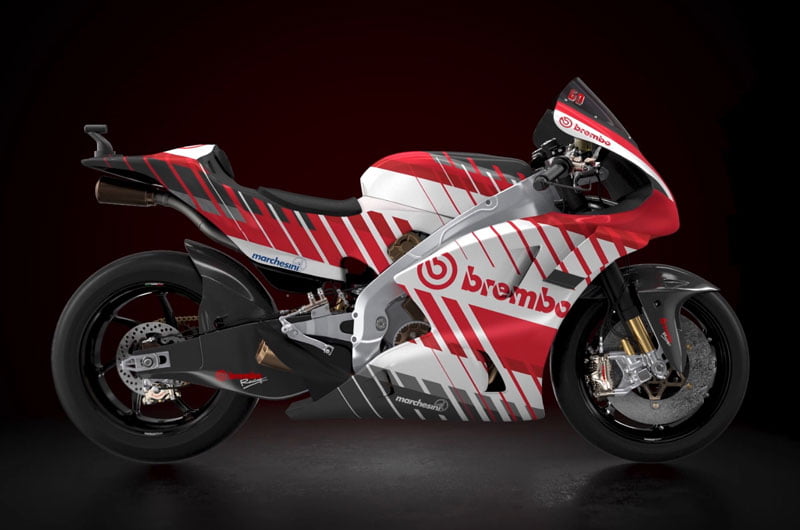For the sixth consecutive season, Brembo will supply the 22 MotoGP riders, each with a personalized approach. A new braking system is available in Moto3, and a significant presence is also confirmed in Moto2.
Thanks to the experience accumulated during 43 premier category championships (MotoGP and 500) during which motorcycles equipped with Brembo brakes have won 32 World Drivers' Championships, 33 World Constructors' Championships and triumphed in over 500 GP with the main protagonist teams, Brembo has created personalized braking systems for each of the 22 drivers who will compete in the 20th MotoGP championship, the category introduced in 2002 to replace the 500 category.
The 11 teams have decided again to choose the high performance, reliability and safety guaranteed by Brembo components, which includes: brake calipers, carbon discs and pads, brake master cylinders and clutch master cylinders.
For the 2021 season, a wide range of technical solutions will allow Brembo to guarantee each of them the possibility of customizing the braking system according to the riding style, the characteristics of the circuit and the racing strategy, best combining the characteristics of the braking system components.
GP4 caliper
Introduced at the start of the 2020 MotoGP championship, the GP4 is a new one-piece aluminum caliper machined from a solid block of aluminum, with a radial mount and four pistons. It has become the reference caliper for most MotoGP riders, although some of them continue to prefer the use of the 2019 caliper for reasons of habit and performance different from the bike itself .
This stirrup, characterized by a extreme design with the presence of fins on its external body, includes innovative elements such as a reinforced stirrup equipped with an anti-friction system. In practice, the caliper is characterized by a system that allows each rider to amplify the braking torque, that is to say that during braking, the driver generates a force which is added to that created by the hydraulic pressure of the brake fluid on the pistons. In this way, with the same force on the rider's brake lever, the braking torque is amplified.
Thanks to a spring device, conversely, the anti-friction system greatly reduces the residual torque and to avoid contact between pads and discs in the absence of pressure in the system. This prevents the formation of this unwanted force which tends to unintentionally slow down the motorcycle.
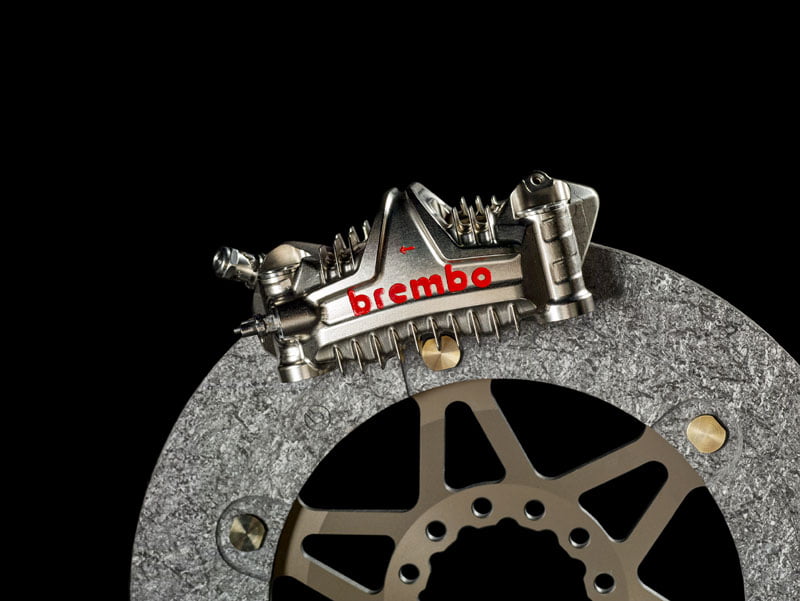
Ten carbon brake disc solutions
The majority of pilots should choose discs with a diameter of 340 mm, which are divided between High Mass and Standard (low mass). Some teams, on the other hand, will continue to use Standard and High Mass discs of 320 mm diameter.
In addition, for each brake disc and pad format, two different carbon compounds are available, which differ in their initial bite and resistance to high temperatures.
In total, riders have ten different options to choose their brake discs : five kinds of disk, each kind of disk having two material specifications (High Mass and Standard Mass).
Among these five kinds, there is also one
What's new that Brembo will make available to teams from this season: it is a ventilated carbon disc. The characteristic of this disc is precisely ventilation which aims to increase heat exchange and therefore improve the cooling of the disk itself. This is a solution designed specifically for circuits that promise to be very harsh on the braking system, such as Spielberg, Motegi, Sepang or Buriram.
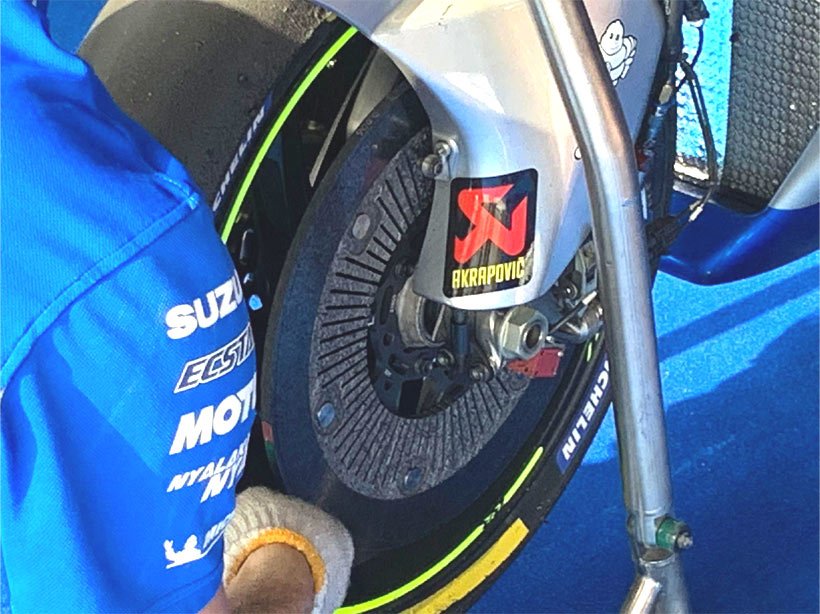
Carbon offers a triple advantage: a reduction in unsprung mass, an identical coefficient of friction from start to finish and an absence of residual torque problems that can arise from the use of steel discs.
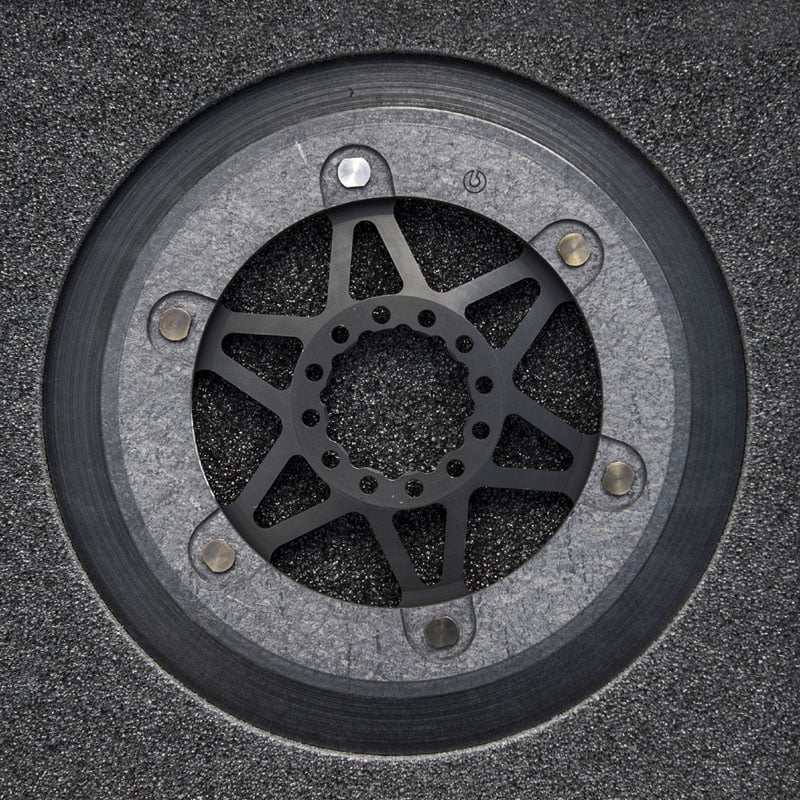
Focus on braking sensation
The types of brake master cylinders available to teams differ in terms of center distance, in order to adapt both the stroke and the “responsiveness” of the control according to the rider's feeling. In addition, each motorcycle is equipped with a
remote adjustment device, used by the driver's left hand to vary the position of the brake lever, even during one lap of the circuit.
According to Brembo, more than a third of MotoGP riders regularly use the thumb master cylinder. This technical solution, introduced by Brembo in the 90s to support Mick Doohan, allows the rear brake to be activated by pressing a special lever placed on the left half handlebar and operated by the rider's thumb.
Two variations of the thumb master cylinder system are used for the 2021 season : the most widespread includes
a single circuit for the thumb and pedal master cylinder, using a 2-piston rear caliper. The alternative presents two separate circuits, each acting on two of the four pistons of the rear caliper. In the first option, one system excludes the other, in the second they can act simultaneously.
Since 2019, teams can also use a variation of the classic thumbstick, called controller “ push and pull“. This new design is optimized to guarantee maximum efficiency: It has a dual function and can be operated by both thumb or index finger, depending on the pilot's preference. Using this joystick with the index finger requires mounting it on the lever with a rotation of 180° compared to using the thumb, increasing sensitivity and grip on the lever during deceleration.
Marchesini Wheels
Marchesini forged magnesium wheels will be used by the majority of riders competing in MotoGP 2021, i.e. 7 teams out of 11. Marchesini wheels are made of Y, with 5 or 7 branches for the front and 7 spokes for the rear. Marchesini wheels, a brand of the Brembo group, provide weight savings for motorcycles, favoring acceleration and maneuverability when changing direction and during the most critical phases: When entering a curve with the brakes applied, when turning at high lean angles (up to 60°) and exiting curves with the motorcycle tilted with the throttle open.
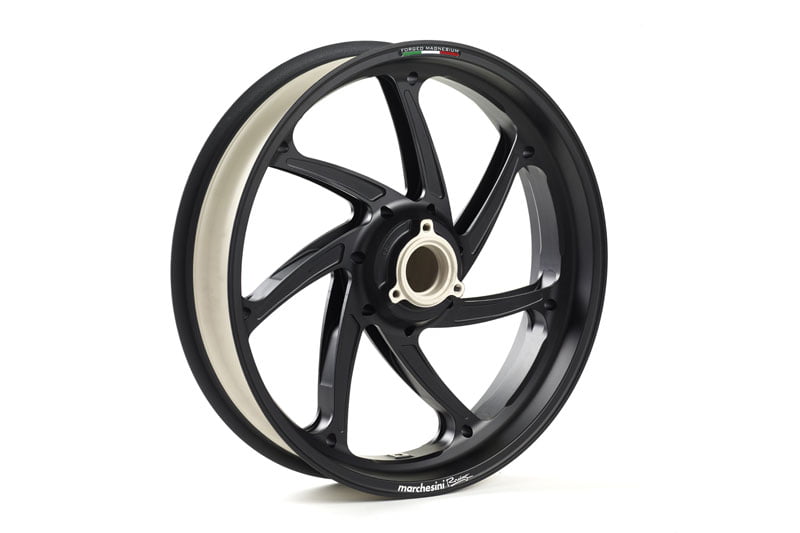
New braking system in Moto3 and confirmed presence also in Moto2
After the tests in Jerez and Portimão, Brembo officially presents the new braking system for the 3 Moto2021 world championship, while compared to 2020, the Moto2 braking system provided unchanged.
The weight is around 200 grams lighter than the system used until last season.
The new one-piece aluminum caliper is entirely machined from a solid piece of aluminum, with a 32mm diameter twin-piston radial connection, and is externally characterized by radiant fins with the aim of increasing heat exchange. From an aesthetic point of view, the new Moto3 caliper takes on the appearance of the new GP4 caliper launched in MotoGP at the beginning of 2020. This element is certainly important not only for the performance of the bike itself, but also for the concept of design and the notion of family to which, for several years, Brembo has paid particular attention.
Le new aluminum disc is characterized by a reduction in the height of the strip which allows a reduction in the weight of the disc itself with the aim of limiting the unsprung masses, especially those in rotation.
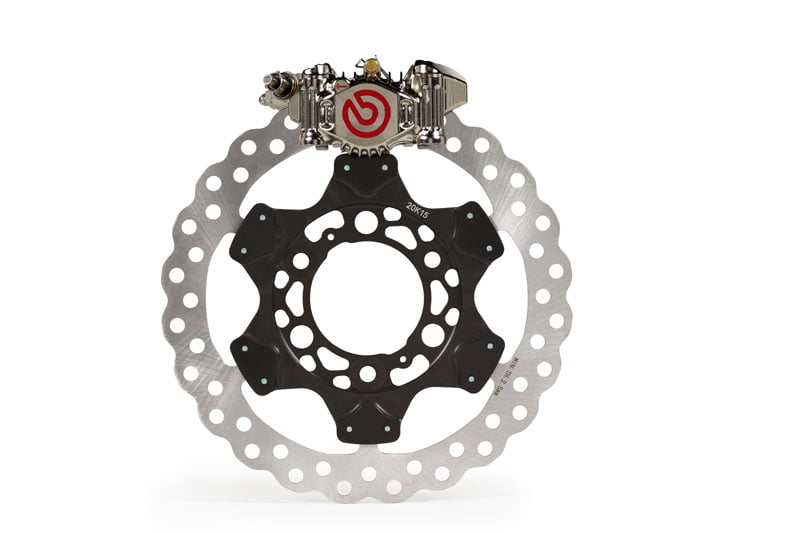
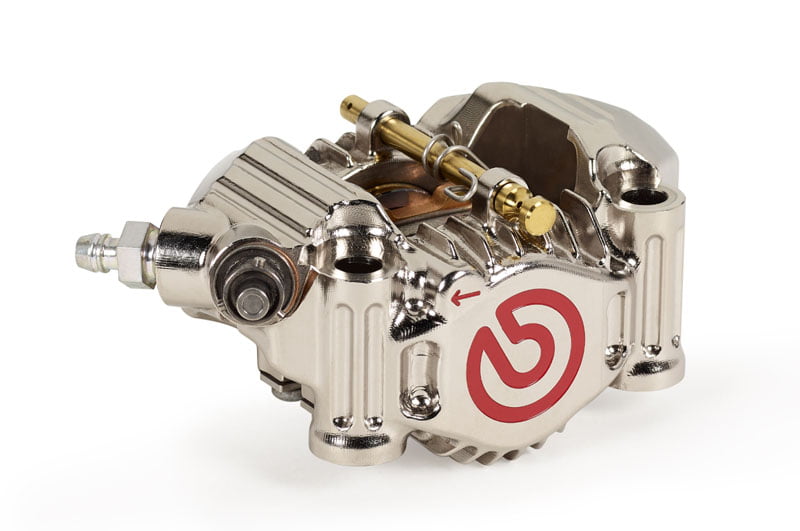
The big news is the introduction of variable center distance system, born with the RCS master cylinder for road motorcycles and now also introduced into the world of racing on two wheels. The new master cylinder is characterized by the use of pistons of a smaller diameter to the one used until the 2020 championship,
a choice between 14 mm and 15 mm and no longer standard 16 mm, with the possibility for the rider to adjust the distance between 18 mm and 20 mm depending not only on the riding style but also on the circuit.
Thanks to this variation in center distance, the driver can therefore benefit from a modular or more aggressive system in the different driving phases.
The braking system is completed by Z04 sintered inserts and the new Z16 inserts.
Brembo provides approximately 100% of the 15 Moto2 and 14 Moto3 teams in calipers, 50% in steel discs, 75% in pads, 90% in master cylinders and just under 50% in Marchesini wheels.


